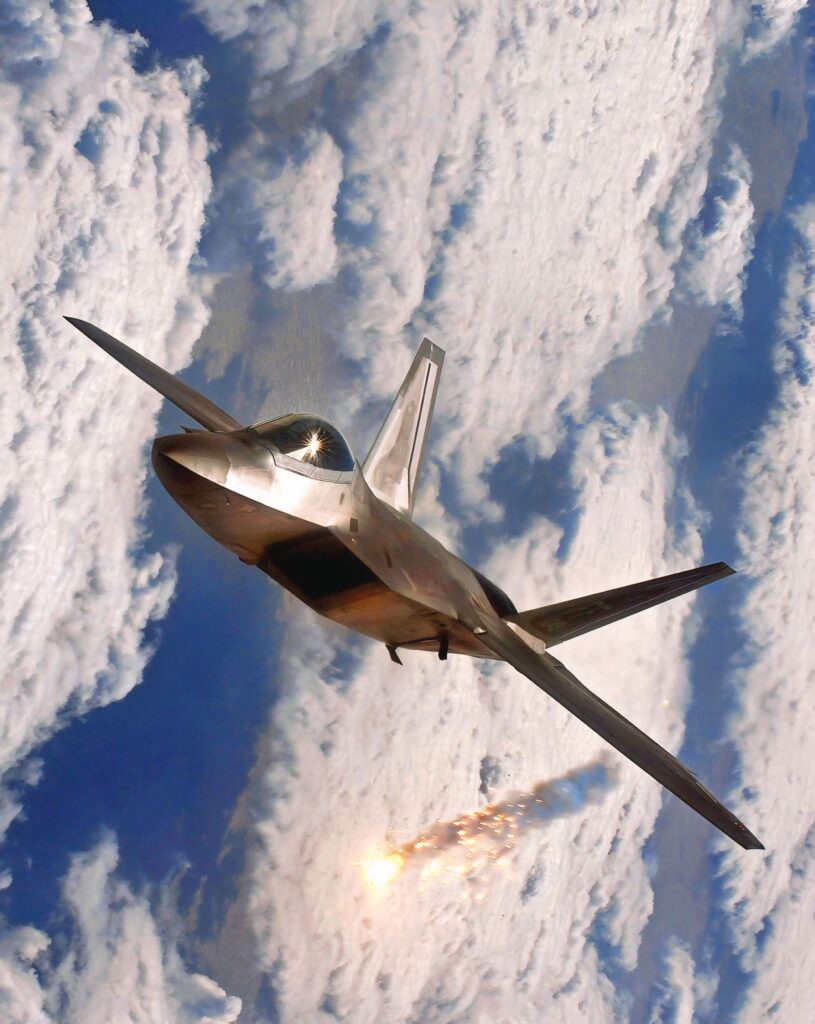
The F-22 Raptor is often regarded as one of the most advanced fighter jets ever built. Developed by Lockheed Martin and Boeing for the United States Air Force, it represents a major leap in air superiority technology. Its design combines stealth, speed, agility, and cutting-edge avionics, making it an aircraft that dominates in multiple roles.
At its core, the F-22 was created to maintain American air superiority well into the 21st century. Entering service in 2005, it was the result of years of development that began during the Cold War. The Air Force needed a next-generation fighter that could counter future threats from advanced aircraft and sophisticated air defense systems. What emerged was not just a fighter, but a technological showcase that set new standards for modern air combat.
One of the most defining features of the Raptor is its stealth capability. The aircraft’s shape, special coatings, and internal weapons bays allow it to minimize radar detection. Unlike older jets that rely on speed or altitude to avoid enemy radars, the F-22 can often remain unseen until it chooses to engage. This gives pilots a major tactical advantage, allowing them to strike first while keeping the enemy at a disadvantage.
Performance is another area where the F-22 excels. Powered by two Pratt & Whitney F119 engines, the jet is capable of “supercruise,” which means it can sustain supersonic speeds without using afterburners. This ability allows the aircraft to fly faster for longer periods without consuming excessive fuel or producing the heat signature that afterburners generate. Combined with its thrust-vectoring nozzles, the Raptor can outmaneuver almost any adversary in the sky.
Avionics also play a critical role in what makes the F-22 formidable. The jet carries an advanced suite of sensors and radar systems that provide pilots with unmatched situational awareness. Information from multiple sources is fused into a single display, making it easier for pilots to process complex data quickly. This means that in a combat scenario, the F-22 pilot often knows more about the battlespace than the opposition, which is a decisive advantage.
The Raptor’s versatility extends beyond air-to-air combat. While its primary mission is to dominate enemy aircraft, it can also carry out precision ground attacks, electronic warfare, and intelligence-gathering missions. Its internal weapons bays allow it to carry missiles and bombs without compromising stealth, and external hardpoints can be used if stealth is less of a concern.
Despite its strengths, the F-22 program faced challenges. High costs and shifting defense priorities led to the production line being closed after just 187 aircraft were built. While this limited the fleet’s size, it ensured that the United States maintained an exclusive advantage with a jet unmatched by other air forces.
Today, the F-22 remains a critical component of America’s defense strategy. Even with the introduction of newer aircraft like the F-35 Lightning II, the Raptor is still considered the premier air superiority fighter. It stands as a symbol of technological innovation, unmatched performance, and the enduring commitment to maintaining control of the skies.


